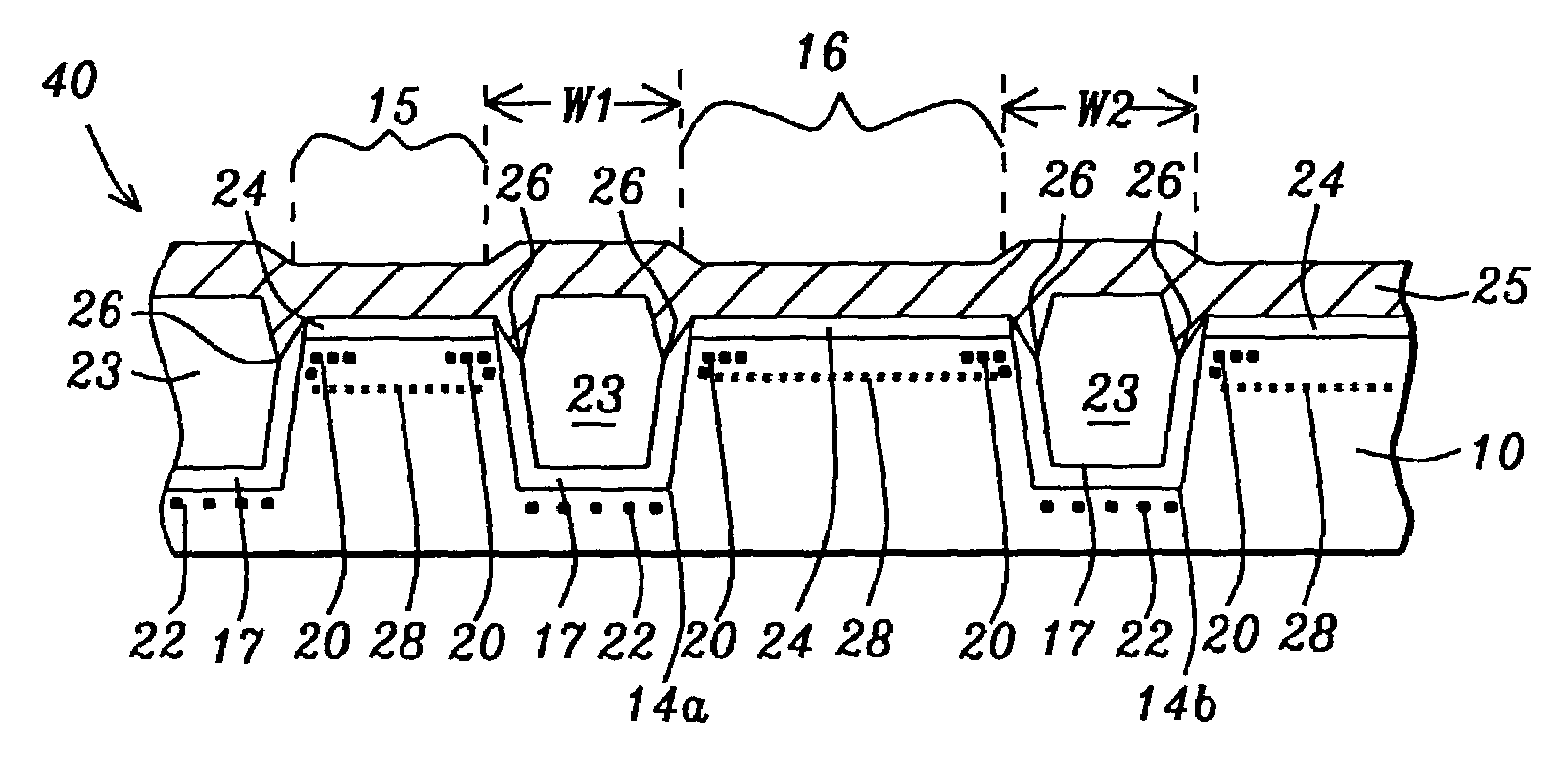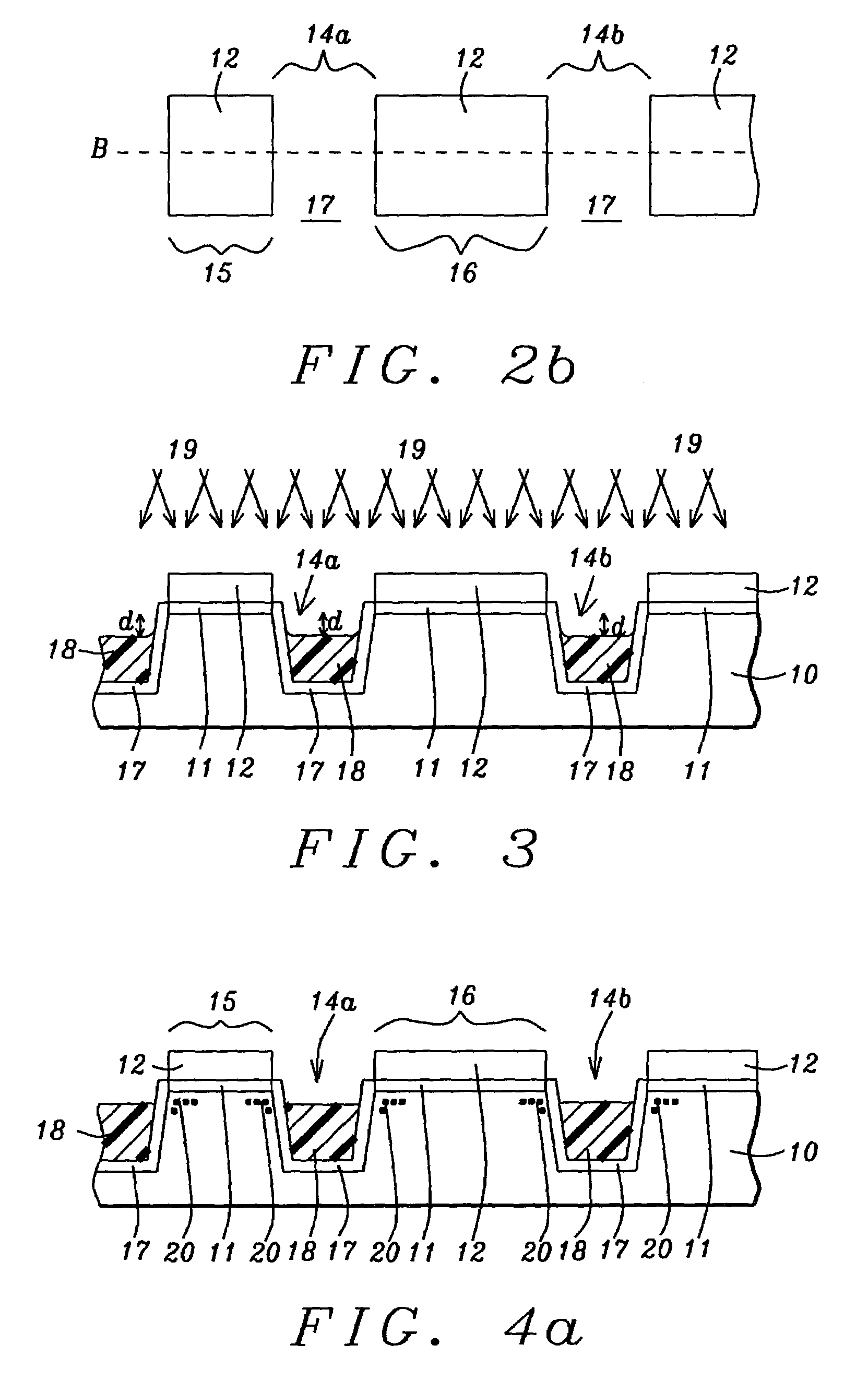Narrow width effect improvement with photoresist plug process and STI corner ion implantation
a photoresist plug and narrow width technology, applied in semiconductor/solid-state device manufacturing, semiconductor devices, electrical equipment, etc., can solve the problems of reducing threshold voltage (vt), affecting the performance and reliability of nmos transistors, and reducing the vt of nmos transistors, so as to reduce the tendency to migrate, improve the vt roll-off effect, and mitigate the effect of localized electrical fields
- Summary
- Abstract
- Description
- Claims
- Application Information
AI Technical Summary
Benefits of technology
Problems solved by technology
Method used
Image
Examples
Embodiment Construction
[0029]The present invention is a method of improving the reliability and performance of NMOS transistors in a semiconductor device by improving the Vt roll-off for short channel devices. However, the method is also effective for long channel devices. The invention is not limited to the specific examples described herein and the figures are not necessarily drawn to scale.
[0030]Referring to FIG. 1a, a substrate 10 is provided which is typically silicon but may be based on silicon-on-insulator, silicon-germanium, or gallium-arsenide technology. Furthermore, the substrate 10 may be doped or undoped. A pad oxide layer 11 is formed on substrate 10 and has a thickness in the range of about 30 to 200 Angstroms. A cap layer 12 which is preferably silicon nitride is then deposited on pad oxide 11 by a chemical vapor deposition (CVD) or plasma enhanced CVD technique. Cap layer 12 has a thickness between about 200 and 5000 Angstroms.
[0031]Trenches 14a, 14b are formed by first coating a photores...
PUM
 Login to View More
Login to View More Abstract
Description
Claims
Application Information
 Login to View More
Login to View More - R&D
- Intellectual Property
- Life Sciences
- Materials
- Tech Scout
- Unparalleled Data Quality
- Higher Quality Content
- 60% Fewer Hallucinations
Browse by: Latest US Patents, China's latest patents, Technical Efficacy Thesaurus, Application Domain, Technology Topic, Popular Technical Reports.
© 2025 PatSnap. All rights reserved.Legal|Privacy policy|Modern Slavery Act Transparency Statement|Sitemap|About US| Contact US: help@patsnap.com



